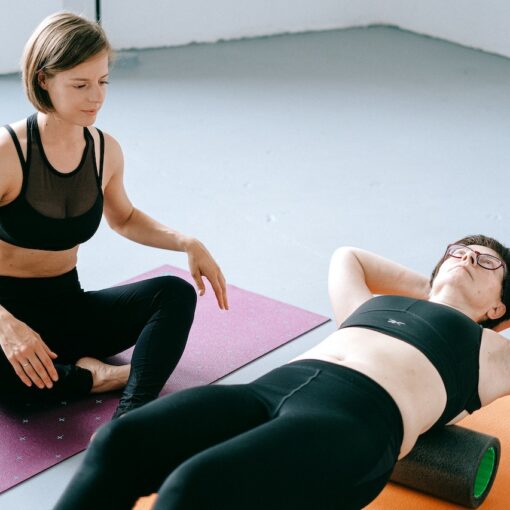Running is an excellent form of exercise that provides numerous health benefits, including increased cardiovascular fitness, improved mental health, and better overall well-being. However, pursuing any physical activity – especially one as intensive as running – requires you to think about recovery. Allowing your body to recuperate after tough runs is crucial for preventing injury and ensuring consistent progress in your running journey.
Speeding up recovery becomes even more important if you regularly participate in races or have a packed training schedule. Thankfully, there is a wealth of scientifically-backed information on various methods you can use to enhance your post-run recovery. By incorporating the proper techniques and taking care of your body, you’ll be able to bounce back from intensive runs more quickly and efficiently, allowing you to return to hitting the pavement sooner rather than later. So, let’s delve into some strategies that can help you optimize your post-running recovery and get the most out of your workouts.
Importance of Recovery
Recovery is a crucial aspect for runners, as it allows the body to repair and strengthen itself after strenuous exercise. Proper recovery helps prevent injuries, promoting better performance and ensuring long-term progress.
When runners neglect sufficient recovery, they can experience decreased performance, increased muscle soreness, and a higher risk of injury. Moreover, inadequate recovery may impair the immune system, making athletes more susceptible to illness.
There are several factors to consider when optimizing recovery for a runner:
- Rest: It’s essential to give the body ample time to repair itself. Depending on the intensity and duration of the run, one might need a full day of rest or at least a few hours for lighter sessions.
- Sleep: Getting enough quality sleep is vital for a runner’s recovery, as it’s the best way for the body to restore energy and repair muscles. Aiming for 7-9 hours of sleep per night can help ensure your body is well-rested.
- Nutrition: Proper nutrition, particularly protein and carbohydrates, aids in muscle repair and glycogen resynthesis. Consuming a protein-packed meal after a run can contribute to improved recovery.
- Hydration: Drinking sufficient water helps flush toxins from the body, alleviates muscle soreness, and replenishes lost fluids during exercise.
- Cool-down: Incorporating an adequate cool-down routine post-run can help lower heart rate, facilitate the removal of waste products from muscle tissue, and reduce muscle stiffness.
- Gentle movement: Engaging in light activities, such as walking or yoga, on recovery days can improve blood flow and promote healing without adding stress to the body.
By prioritizing recovery and being attentive to the body’s needs, runners can enhance their performance and longevity in the sport. Regularly implementing these recovery strategies can lead to more effective training and a more enjoyable running experience.
Rest and Sleep
Napping
Incorporating rest and sleep into your running recovery routine can greatly benefit your performance and overall health. One way to ensure you get sufficient rest is by taking a daytime nap. Napping for just 20 to 30 minutes can have a positive impact on your recovery and help you feel more refreshed and ready for your next run 1.
It’s important to find the right balance between exercise and rest, as pushing yourself too hard without allowing your body to recover can lead to injury and diminished performance.
Cooldown and Sleep Quality
In addition to napping, you should pay attention to your cooldown routine after a run. A proper cooldown can significantly speed up your run recovery rate. For instance, taking 10 to 15 slow inhales through your nose followed by slow exhales through your mouth during your cooldown stretching can help improve your post-run recovery time 2.
Sleep is another crucial aspect of recovery. A good night’s sleep supports muscle recovery, improves cellular repair, and enhances performance. Prioritizing sleep and aiming for 7 to 9 hours of quality sleep each night will greatly contribute to your overall recovery and running performance 3.
Here are a few tips to improve your sleep quality:
- Establish a consistent sleep schedule, going to bed and waking up at the same time every day.
- Create a relaxing bedtime routine, such as taking a warm bath or engaging in gentle stretching.
- Limit exposure to screens and bright lights before bed.
- Keep your bedroom cool, dark, and quiet.
By incorporating rest, proper cooldown techniques, and prioritizing sleep, you can effectively speed up your running recovery and feel more energized for your next run.
Active Recovery Methods
Active recovery involves engaging in low-intensity exercises to help your body recover faster after a strenuous run. It promotes blood flow in your legs, which aids in reducing muscle soreness and speeding up the healing process. Here are some popular active recovery methods to incorporate into your post-run routine:
Walking
A gentle walk is a great way to increase blood flow and help your muscles recover after a run. Remember to maintain a relaxed pace and walk for at least 10 to 20 minutes. Walking helps to prevent muscle stiffness and promotes better circulation, ensuring that your legs receive the nutrients they need for efficient recovery.
Yoga
Yoga is a fantastic exercise for active recovery as it combines stretching, controlled breathing, and relaxation techniques. Practicing yoga regularly can improve your flexibility, balance, and overall running performance. Try incorporating a yoga session into your recovery routine, focusing on poses that target your hips, hamstrings, and calves.
Jogging
An easy, slow-paced jog is another excellent method of active recovery. Jogging at a comfortable pace, below your regular training intensity, with a relaxed stride helps increase blood flow to your legs, speeding up the recovery process. Keep your heart rate low and focus on maintaining proper running form.
Foam Rolling
Foam rolling is a form of self-myofascial release that aids in alleviating muscle tightness and improving flexibility. By applying pressure to specific points on your body with a foam roller, you can help release knots and tension, making it an essential component of any runner’s recovery routine.
- Place the foam roller beneath the targeted muscle.
- Using your body weight, apply gentle pressure and slowly roll back and forth.
- Spend additional time on areas that feel particularly tight or sore.
Stretching
Stretching is a valuable component of your post-run cooldown, aiding in muscle recovery by improving flexibility and reducing muscle tension. Incorporate a series of dynamic and static stretches that target the major muscle groups used during running.
- Dynamic stretches: Perform leg swings, high knees, and other movements that mimic the running motion to warm up your muscles and increase range of motion.
- Static stretches: Hold each stretch for 15 to 30 seconds, focusing on your hips, hamstrings, quads, and calves. Remember to breathe deeply and relax into each stretch, avoiding bouncing or jerking movements.
By using a combination of these active recovery methods, you can help your body recover faster, improve your running performance, and reduce the risk of injury. Make sure to listen to your body and adjust your recovery routine as needed to maximize its benefits.
Nutrition and Hydration
Proper nutrition and hydration play a crucial role in speeding up your running recovery. Ensuring that your body gets the necessary nutrients and fluids can help in repairing muscles and restoring energy levels. This section will discuss how to replenish fluids, eat protein-rich foods, and choose healthy carbohydrate sources.
Replenishing Fluids
After a run, it’s essential to rehydrate as soon as possible to prevent dehydration and support muscle recovery. Drinking water is one of the most effective ways to rehydrate, with the American Council on Exercise recommending 8 ounces of water after exercise, plus an additional 16 to 24 ounces of fluid for every pound of body weight lost during the exercise. Alternatively, you can opt for an electrolyte beverage that can help replenish lost minerals and nutrients.
Eating Protein-Rich Foods
Protein is a vital macronutrient for rebuilding and repairing muscle tissue after a workout. Studies suggest consuming 20 to 40 grams of protein or about 0.4 to 0.5 g/kg of body weight after exercise to maximize muscle growth. Some great protein-rich options include:
- Yogurt
- Peanut butter sandwich
- Chocolate milk
- Protein-packed smoothie
Combining protein with carbohydrates can further enhance recovery, as carbs replenish glycogen stores that get depleted during exercise.
Healthy Carbohydrate Sources
Incorporating healthy carbohydrate sources in your post-workout meal helps your body regain energy and provides the building blocks for muscle repair. Aim to consume a combination of simple and complex carbohydrates to benefit from quick energy release and sustained fuel. Some examples of healthy carb sources include:
- Fruit such as bananas or berries
- Pretzels
- Whole grain bread
- Oatmeal
In conclusion, paying attention to nutrition and hydration can significantly impact your running recovery. Implementing these strategies in your post-workout routine will promote muscle repair, prevent dehydration, and restore energy levels, ensuring that you’re ready for your next run.
Addressing Muscle Soreness and Cramping
Using Foam Rollers
Foam rolling is an effective technique to alleviate muscle soreness and cramping after running. This self-massage technique helps relax tight muscles, reduce inflammation, and break up scar tissues, which contributes to speeding up recovery process 1. To use a foam roller, gently roll it over the affected muscles, applying moderate pressure and stopping on any tender spots. Hold for 20-30 seconds and continue rolling until you have covered the entire muscle group 4.
Ice Baths
Ice baths are another popular method to combat muscle soreness and cramping after running. The cold temperature of the water helps constrict blood vessels, reducing inflammation and promoting recovery 2. To take an ice bath, fill a tub with cold water and ice, then sit or stand in it for 10-15 minutes 3. Make sure to keep your upper body warm by wearing a sweatshirt or covering yourself with a towel. It is important to note that ice baths may not be suitable for everyone, so consult with a healthcare professional before trying it.
In addition to these methods, other tips to alleviate muscle soreness and cramping include:
- Replenishing carbohydrates and protein after running, to rebuild glycogen stores and minimize muscle stiffness 5
- Practicing proper hydration, form, and mindful running techniques to prevent future soreness 2
- Incorporating cooldown stretches and breathwork after your runs to enhance relaxation and recovery 5
By having a recovery plan that addresses muscle soreness and cramping, you can improve your overall running performance and minimize discomfort in the long run.
Monitoring Training Load
Monitoring your training load is essential for speeding up running recovery. By managing your weekly mileage, incorporating interval sessions, and speed work, you can optimize your performance while reducing the risk of injury and excessive fatigue.
Managing Weekly Mileage
Tracking your weekly mileage helps maintain focus on your fitness goals and ensures you’re not overexerting yourself. Gradually increase your mileage each week, aiming for a 10% increase to avoid putting too much stress on your knees.
- Week 1: 20 miles
- Week 2: 22 miles
- Week 3: 24.2 miles
- Week 4: 26.6 miles
Additionally, incorporating leg swings and other dynamic stretches before and after your runs can help improve your flexibility and lower the risk of injuries.
Incorporating Interval Sessions
Interval sessions are crucial for maintaining energy levels and improving overall running performance. These sessions involve alternating between periods of high-intensity running and rest or lower-intensity running.
Here’s a sample interval training program:
| Interval | Duration | Intensity |
|---|---|---|
| Warm-up | 10 min | Easy pace |
| Sprint | 1 min | Max effort |
| Recover | 2 min | Easy pace |
| Sprint | 1 min | Max effort |
| Recover | 2 min | Easy pace |
| Cool-down | 10 min | Easy pace |
Incorporate interval sessions once or twice per week to help improve your running efficiency and speed.
Speed Work
Speed work, such as tempo runs and hill sprints, also plays a crucial role in improving your overall running fitness. These sessions help increase your anaerobic capacity, making you a more efficient and faster runner.
A sample speed work session could include:
- Warm-up: 10 minutes of easy running
- Hill repeats: 5-6 sprints up a steep hill, jogging back down for recovery
- Tempo run: 10-15 minutes at a comfortably hard pace
- Cool-down: 10 minutes of easy running
Incorporating speed work into your training plan one or two times per week can help you better monitor your training load while improving your running abilities.
Injury Prevention and Management
Injury prevention and management are crucial aspects of ensuring a smooth running recovery, helping you maintain your endurance and fitness level while avoiding serious setbacks. This section will focus on the factors that can help you avoid or manage common running injuries, such as dehydration, overtraining, and proper footwear.
Replacing Your Shoes
A key factor in preventing injuries is replacing your running shoes when they become worn out. Over time, the cushioning and support in your shoes can degrade, increasing the risk of injuries like stress fractures and ankle sprains. Many experts recommend replacing your shoes every 300-500 miles. Here are some signs to look for:
- Visible wear on the soles
- Uneven wear patterns
- Loss of cushioning or support
- Any discomfort during or after running
Staying Hydrated
Dehydration can be a significant concern for runners. Proper hydration plays a vital role in preventing muscle cramps and injuries. To maintain optimal hydration levels, consider the following:
- Drink water before, during, and after your run
- Use electrolyte replacement drinks for long runs or workouts in hot weather
- Listen to your body and adjust your fluid intake as needed
Managing Lactic Acid Buildup
Lactic acid is a byproduct of anaerobic metabolism, and it can accumulate in muscles during intense workouts, leading to muscle soreness and discomfort. You can minimize the impact of lactic acid by:
- Incorporating active recovery such as light jogging or walking
- Performing leg drains to help flush out lactic acid
- Using a foam roller or massage to facilitate muscle recovery
Avoiding Overtraining
Overtraining can lead to a variety of injuries and hinder your overall workout recovery. Maintaining a healthy balance between training and rest is crucial for preventing injuries, improving fitness levels, and ensuring optimal recovery. Here are some ways to avoid overtraining:
- Gradually increase the intensity and duration of your runs
- Properly schedule rest days and cross-training activities
- Listen to your body and adjust your training plan if necessary
By taking these precautions and paying attention to injury prevention and management, you’ll be better equipped to speed up your running recovery and continue making progress in your training.
Rest Days and Recovery Periods
Rest days and recovery periods are essential components of any training program for runners. They allow the body to repair and rebuild muscles, improve performance, and prevent injuries.
Rest Days
Rest days are days when you refrain from any strenuous running or exercise. They provide your body with a chance to recover and repair damaged tissues, and can help prevent overuse injuries. Rest days can be different for each individual, but as a general rule, incorporating at least one or two rest days per week should be sufficient for most runners.
Some important aspects to consider during rest days include:
- Giving your muscles and joints a break from the stress of running
- Allowing time for proper hydration and nutrition to replenish energy stores
- Engaging in light activities, such as stretching or yoga, to improve flexibility and blood flow without adding stress to your body
Recovery Periods
The recovery period is the time between running sessions or workouts. This period can range from 24 hours to 72 hours, depending on the intensity and duration of the exercise. The recovery period is crucial for allowing your body to adapt and recover from the stress induced by the workout.
During this period, you should focus on:
- Proper nutrition and hydration to replenish energy stores
- Getting enough sleep to support muscle repair and growth
- Light stretches and foam rolling to alleviate muscle soreness and improve range of motion
It is important not to neglect the recovery period and to listen to your body. If you continue to push yourself without allowing sufficient recovery time, you risk overtraining, which can lead to decreased performance, fatigue, and even injury.
Recovery after running can be further optimized by employing specific recovery modalities, such as ice baths, compression garments, and restorative practices like meditation and breathwork.
In summary, giving your body adequate rest days and recovery periods is necessary for improving running performance, reducing the risk of injury, and ensuring overall wellbeing. Always listen to your body and adapt your training regimen as needed to prioritize recovery and maintain optimal health.
Additional Recovery Techniques
In addition to the standard recovery methods like proper sleep, hydration, and nutrition, there are a few additional techniques that can help you speed up your running recovery. These techniques target specific areas in your body, such as your muscles, nerves, and joints, to provide relief and promote healing.
Compression Gear
Using compression gear after a run can help improve circulation and reduce swelling in your muscles. Improved blood flow helps to deliver essential nutrients and oxygen to your muscles, promoting healing and reducing recovery time. Compression gear can be particularly helpful after an intense interval session, speed work, or long-distance run that puts extra strain on your muscles and causes microscopic tears. Be sure to choose the right type of compression gear, such as socks, sleeves, or tights, for your needs and wear them as directed for optimal results.
Massages
Massages are an effective way to relieve tension in your muscles and can assist in speeding up the recovery process. They help to reduce inflammation, increase blood flow, and prevent stiffness in the muscles. You can either see a professional massage therapist or do self-massage at home using a foam roller or massage ball.
- Foam Rolling: When using a foam roller, be sure to target your hips, feet, and other areas where you feel tension or tightness. Focus on applying gentle pressure and rolling out any knots or tender spots slowly to avoid causing further discomfort.
- Massage Ball: A massage ball is an excellent tool for targeting smaller muscle groups and hard-to-reach areas. Use it to apply targeted pressure to areas like the arches of your feet, between your shoulder blades, and around your glutes for relief from post-workout soreness.
Including these techniques in your recovery routine will help you to get back to your normal mobility more quickly and feel more refreshed between runs. Remember, it is essential to pay attention to your body’s signals and adjust your recovery plan according to your individual needs.
Footnotes
- https://greatist.com/fitness/18-scientifically-proven-ways-speed-recovery ↩ ↩2
- https://www.runnersworld.com/health-injuries/a36687825/recovery-melatonin-breathwork/ ↩ ↩2 ↩3
- https://www.runnersblueprint.com/recovery-for-runners/ ↩ ↩2
- (https://www.runnersworld.com/health-injuries/a36687825/recovery-melatonin-breathwork/) ↩
- (https://www.verywellfit.com/how-to-deal-with-muscle-soreness-after-running-2911377) ↩ ↩2




